We visited the Hagar Qim Temples on a gloriously sunny day last week. The sunflowers cover the fields around the temple and make for a grand entry into the site of these astonishing Neolithic structures.
Over time the elements have damaged the porous limestone with centuries of rain and sun. Heritage Malta has created floating canopies to cover these endangered sites and prevent further loss.
The sail-like white structures create anticipation as you descend to the Temples of Hagar Qim and Mnajdra. To the south is the sea, to the north a flat plain that looks over most of southern Malta.
It is believed the temples were carefully positioned to allow the monoliths and openings created in the monoliths to take advantage of the movement of the sun. Circular holes were made to perfectly capture the angle of the suns rays. During the equinox, the rays of the rising sun pass straight through the principal doorway to reach the innermost central niche. This reminded me of the same phenomenon found in the stone temples I saw at Machu Picchu in Peru.
The structure of Hagar Qim is unusual with its several doorways facing different directions. Today the entrance is from the southeast facing the sea and the exit doorway faces inland. The entrance, a trilithon is supported by two pillars (orthostats,) topped by a stone slab (lintel.) After entering through the trilithon you move into an internal courtyard.
The D shaped courtyard space (apse) is ringed by megaliths with horizontal layers of stone capping the wall structure.
It is unknown whether the courtyards were wholly or partially roofed. But most archaeologists agree that corbelled roofs made of successive rings of megaliths, each one smaller than the one below, probably existed at this site.
The floor of the court is created with gigantic flagstones. The millenia have done little to disturb the flush surface of the carefully trimmed and placed limestone rocks. All of the prehistoric buildings at Hagar Qim, built around 5,000 years ago, are Globigerina limestone, a relatively soft yellowish stone that is still used for buildings in Malta.
Later temples have external walls of Coralline limestone which is harder than the Globigerina used for the interiors, reliefs, carvings and sculpture. The carving above shows the use of this soft limestone in one of two identical altar pieces found during excavation of the site.
On either side of the court is an opening cut from a single megalith known as a “porthole” doorway. The two doorways give access to circular rooms behind the courtyard. The facing doorways are positioned so that it is not possible to see into one internal room from the other. As in the Tarxien temples holes were made in the stones to attach doors or screens that may have been used for privacy or to shield rituals.
Large sculptures of corpulent figures were found here as the were at the Tarxien temples of a later period. The figures themselves are now found in the amazing National Museum of Archaeology in Valleta. But you can see the indentations where the feet of the figures nestled on stone pedestals at Hagar Qim.
The enormous vertical stones called “menhirs” (long stones) or orthostats surrounded the perimeter of the temple. In the photo above you can see a human figure standing far to the right that can give you a sense of the size of these vertical monoliths.
The largest megalith at Hagar Qim weighs 60 tons and is 6.4 meters across. How did these ancient people move a stone of this size into place? And how, since the temples were built over generations, did people build on the work of earlier architects?
After spending time exploring the temples and feeling overwhelmed we ended our day with a glass of wine. We just sat quietly in sight of Hagar Qim.



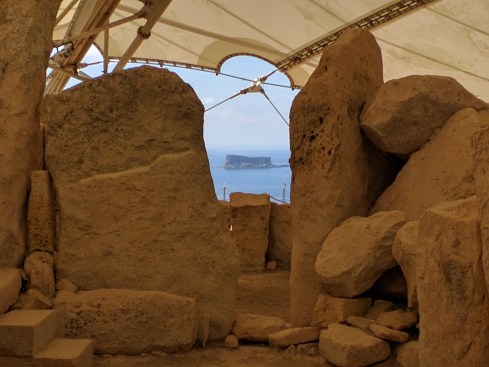

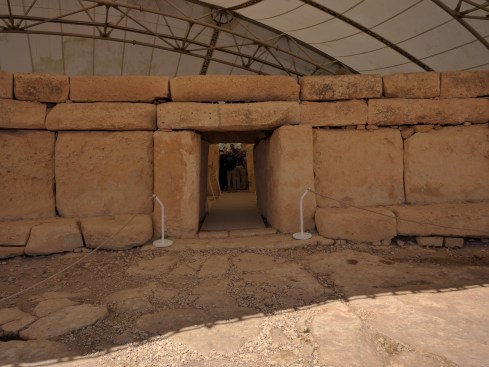
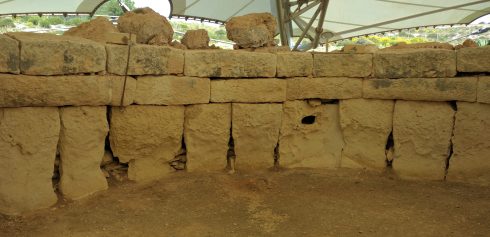
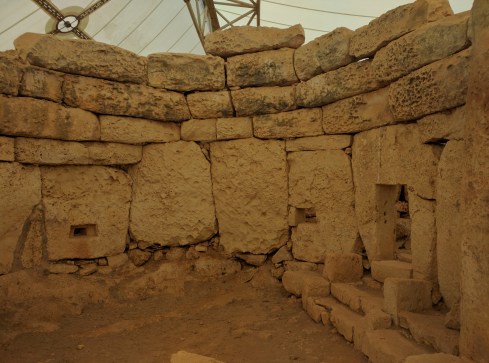
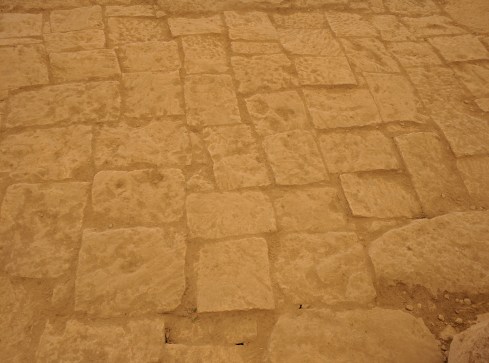
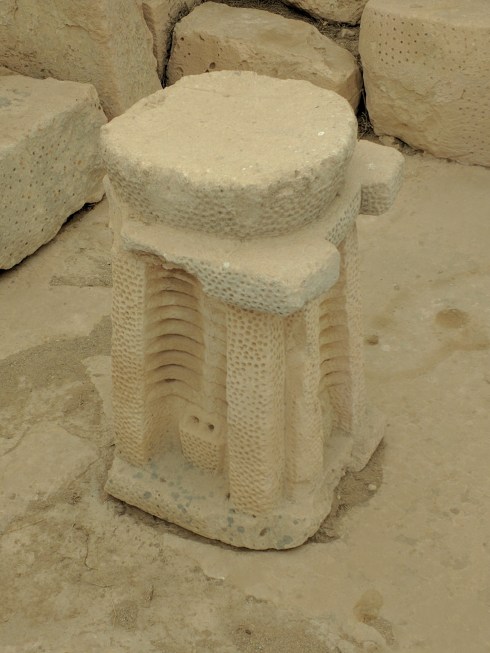
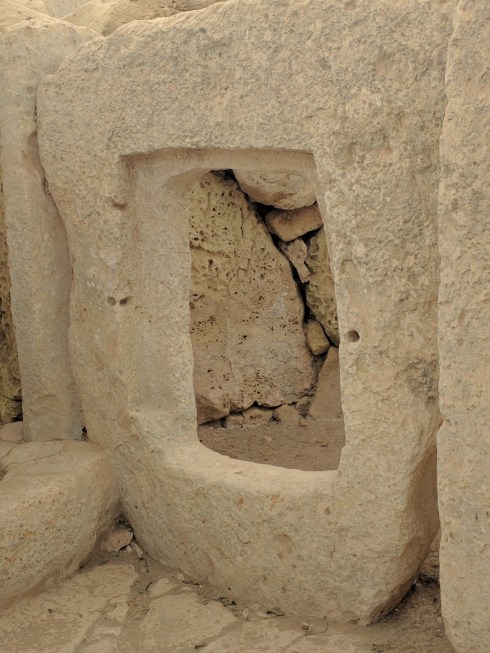


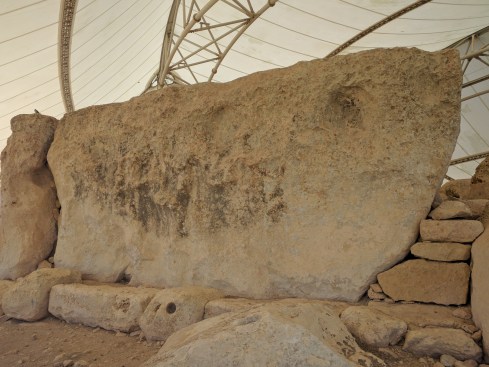
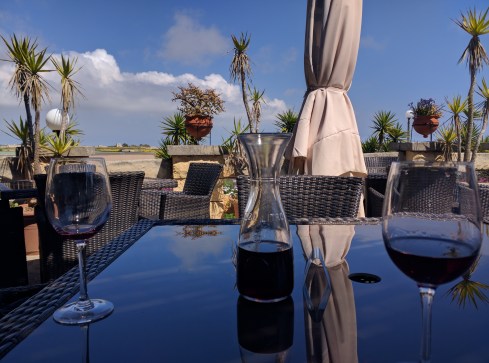
this sounds and looks like the perfect outing for the day! civilizations honoring astronomy and nature always fascinates me
So much history, I can see how you could become overwhelmed with it all. Question: Where are all the tourists?! Looked like you had the area all to yourselves.
It is still the “off-season” here. April marks the beginning of the tourist season. But there were other tourists there. We missed them in the photos. The Malteze we have met tell us we were smart to come now as the summertime is very, very hot and the sites are overrun with tourists. It is nice to have the space to really see.
We had a really great day. The weather was beautiful. The wildflowers are in bloom. At one point we were just rambling through farmers fields and had to jump a rock gully. Very fun!